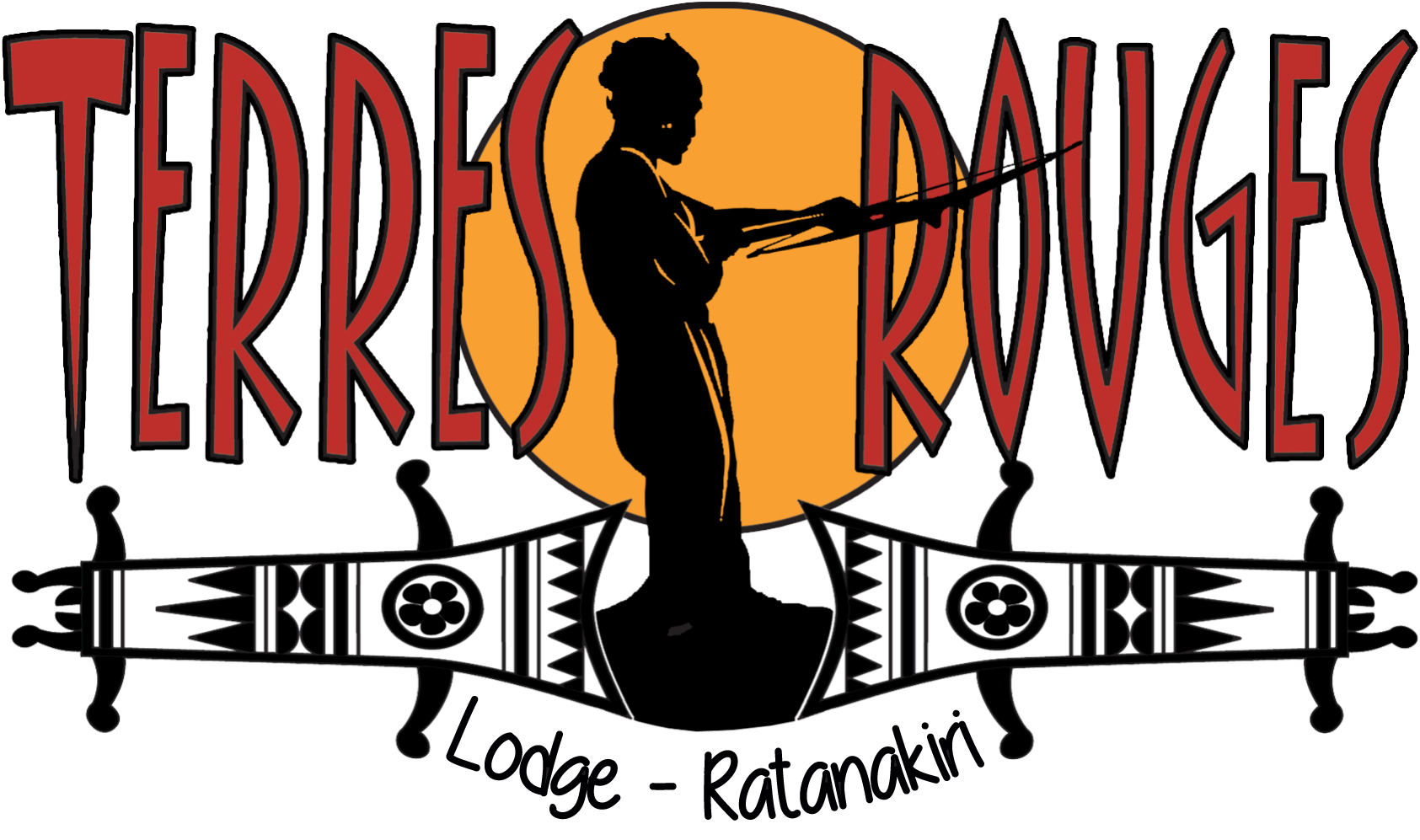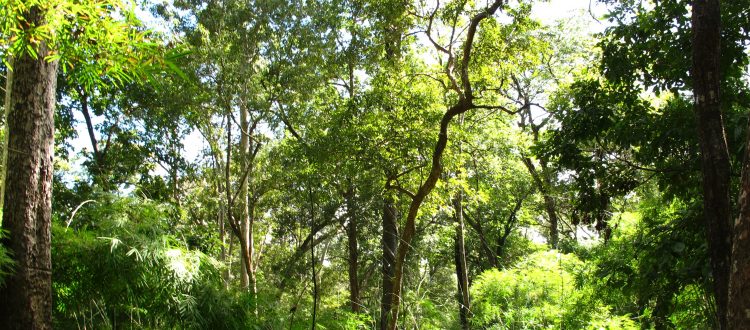Revue de presse – Sawasdee
Forest Dwellers
Off the map
In the northeast corner of Cambodia lies a region and a people that follow their own pace, one of far removed from that of modern Asia
By Chris Kucway
We were about one kilometre downstream from the village when our dugout’s motor coughed and cut out. We were 500 metres downstream when the chain we were being towed with got snarled in a second boat’s propeller. We were in trouble.
Several hours upriver, 70 kilometres along some tortuous dirt roads from Ban Lung- the nearest speck of a town in Cambodia’s northeast that could boat cold beer-and with the day’s light fading, the only good news was that it was dry season and the rapids weren’t overpowering. They could still smash our modest craft to bits, but they weren’t too strong. Eventually, the chain was untangled, tied together in a makeshift metal knot and our two boats sputtered to life then churned their way through the chop a third and final time. Some 20 minutes later our group of six foreigners, a never-say- die guide, two boatmen and their two child helpers arrived at a path that led to our destination, a Jarai village. The Jarai are one of the country’s indigenous tribes, part of Khmer Loeu, who live in this far-flung corner of Cambodia, a mere eight kilometres from Vietnam as the fish swims, but light years from the modern world.
After a short walk up a long the banks and into the forest, our first stop was not the village itself but a burial ground that the Jarai mark with wooden totems instead of tombstones. Traditionally, the Jarai have been a semi-nomadic people, influenced by animism and even Christian belief from Vietnam. Each totem tell the story of the person buried in that spot, whether it is a roughly hewn effigy of a pregnant woman who died in the childbirth or the vine-enshrouded figure of a man holding who had been local Khmer Rouge. The scene, like the tribe we were about to meet, blended into the surrounding forest, lending a definite air of our own impermanence.
Further through the dry bush that feeling took on even greater resonance, for the Jarai represent an extreme version of subsistence living. When we arrived, the men were out in the forest hunting, while the women and the children stayed at home to while away the day. Illiterate, impoverished and with seemingly less interest in the outside world than you might expect, the villagers were appreciative of the medicines we’d brought.
Their huts, made of little more than bamboo and leaves, were their main possessions. Unlike hill tribes elsewhere in the region, colourful clothing was no where to be seen; some of the children had no clothes whatsoever.
The setting was just as basic. Our trip upriver was a peek at the erratic side of nature. It being the dry season, we had to continually snake and double back through the deepest sections of the river. Riverbanks were lined with dense, tangled brush, stands of trees as far as the eye could see and little of the clear-cut farming that is all too common along the sole dirt roadway that leads to this to this corner of the country.
On the way back as the sun set, small villages that had been all but invisible during the day gave themselves away first with columns of smoke, then, as the sky darkened, by fires. Once past any settlements, the night fell over us like a heavy blanket. Not until we got back to our four-wheel-drive did some light appear from slash-and-burn agriculture.
On the vast continent known for it huge population centres, this area really was on the map and barely mentioned in the guidebooks.
It would be easy to say that the 70 kilometres of dirt road-known as Highway 19-out of Ban Lung to the river was a washboard. It would be wrong too. That would be an improvement. Instead, it was a glorified path, rock hard in parts, as sandy as Sihanoukville beach in others, the only constant being the ruts, divots and potholes that would trouble Tiger Woods on a good day. This is the type of drive that makes you separate your teeth with your tongue so they’ll stop chattering. A place where shock absorbers go to die.
The speedometer, normally bouncing around the 30 kilometres an hour mark or below, occasionally hit 50, though you had to wonder how accurate it was as the gas gauge didn’t budge from empty on the drive from Ban Lung. Our four-wheel drive kicked up a dust storm whose wake took a few minutes to settle and showered everything along the road, permeating every crack and crevice with a reddish-brown dust.
BAN LUNG DEFINES THE IDEA OF A SLEEPY VILLAGE.
During the dry season, its one-room shack airport next to a dirt runway is coated in red dust so thick that the loured glass windows bear times are ahead if the hand-printed sing that hangs in the fenced-in cage of departures area is any indication:” We would like to apologize for inconsistencies due to terminal construction. Temporarily, we would like you to wait here until new terminal construction is finished. Thanks!”
While Ban Lung is the epitome of a small town in the middle of nowhere, one notable address is Terres Rouges, where we stay. Run by a French husband and his Cambodian wife, the lodge is a gem of the rough, much like the sapphires that open-pit miner search for in the bush several kilometres away. With its garden and restaurant, it became our refuge. The couple knowledge of the area is unsurpassed and, along with the services of Diethelm Travel Cambodia (E-mail: dtc@dtc.com.kh), a trip to this region, while a slog, is much more enjoyable. The province’s remoteness and the simple way of life are, in fact, its charms.
This primitive economy has relied on rice, corn and root crops to provide subsistence, with cashew and coffee now become minor cash crops. Gem mining and not-always-legal logging have become the most profitable opportunities. For some, of those in the province who do work, most earn less than one US dollar a day. So when life gets better here, it does so only slowly. Thirty kilometres out side Ban Lung in a town call O Siengle, student now have Internet access, of a short. They can type e-mail messages into a computer and, once a day, a motto fitted with a wi-fi box picks up and delivers the messages when it passes by.
NITH, OUR GUIDE, CALLED IT THE END OF THE ROAD.
He wasn’t kidding. As the gears of our four-wheel-drive ground to a halt and even more dust settled on Ta Veng, the only thing for it was to walk across a wooden suspension bridge that was complete, or rather incomplete, with gaping holes and a few dodgy boards. After that, the dirt path narrowed and twisted its way further north, slowly approaching both Virachay National Park and the border with Laos, some 25 kilometres distant. Parts of that park are still unexplored and it’s not difficult to see why.
On a simple day trip we walked only a couple of kilometres along the trail, stopping off in a Kreung village where the usual assortment of mothers with children came out of their basic stilted homes to, if not greet us with open arms, then at least peer at us as much as we did at them. One comfortable thought was that they didn’t want anything from us other than to ask a few questions. After the children had inspected a coin from one of our pockets, they simply handing it back.
The guidebooks mention that between Ban Lung and Ta Veng there is nothing beyond the tiny village of O Chum. We were content to prove the guidebooks wrong. Aside from the Kreung villages we explored, there was also the lava field that swept aside the lush forest, and a rock base with hollows underneath that echoed if you jump up and down in precisely the right spot. On the edge of this volcanic leftover was a cave that Nith told us was once a tiger’s den. With the sun dropping below the tree line, hitherto unheard noises from the forest and shadow getting darker, the tale become more potent even though tigers haven’t been seen here in year.
Back in the present and further along the dirt road, we came across a crowd standing helplessly by, watching as a fire devoured one family’s hut. A cooking accident. The guidebooks were at least right about one thing: there was no water. It was admittedly odd, even a bit voyeuristic, to stand there side by side with a family-moon, dad and nine kids-whose home was quickly enveloped by orange and red flames. Their worldly possessions included nothing more than a single ceramic pot, a bag of food and two straw baskets. Resigned to their fate, they would rebuild their simple home with new material from the forest. These things happen in the corner of Asia that time, and the guidebooks, seem to have forgotten.

